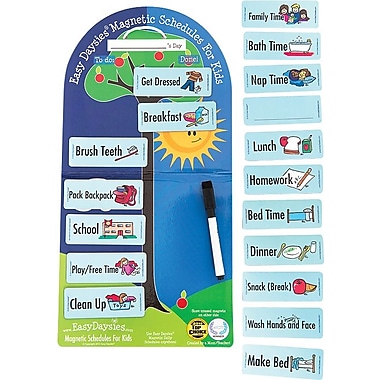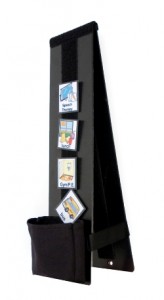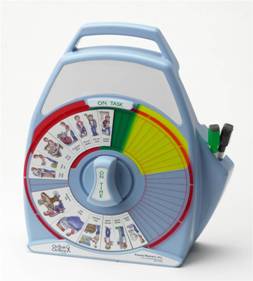 Created by Daniel Sundberg, PhD, the Self Management Planner offers a better way to organize your life and check things off your to-do lists, utilizing the concepts and principles of Applied Behavior Analysis (ABA) to help you to get more done!
Created by Daniel Sundberg, PhD, the Self Management Planner offers a better way to organize your life and check things off your to-do lists, utilizing the concepts and principles of Applied Behavior Analysis (ABA) to help you to get more done!
The Self Management Planner is designed specifically for users who have busy and frequently changing schedules and want something that will do more than schedule time in the day. Not only is this planner perfect for effective time management and organizing your activities, but it also allows to set and track your goals (it even includes graph paper so you can watch your progress!).
This week, save 15% on the full-page Self Management Planner and the compact Self Management Planner and get a head start on keeping your New Year’s resolutions on track! Enter our promo code PLAN2016 at check-out to redeem your savings.
This is a perfect tool for those data collectors out there who are looking for an excellent organizational and record-keeping tool. The Self Management Planner includes:
- Appointment book with full 18.5 hour days and 7 day weeks, to accommodate those who work on variable schedules
- A tutorial on using the planner, appointment book, and measuring your success
- A guide to setting long term goals, and figure out ways to accomplish those goals
- A system for that allows you to select and track your daily activities. People have used this section to track a huge variety of important things like spending, hours billed, driving mileage, activity goals, and more.
- Graphs to help you see and track progress on your goals
- Lined note paper
- Blank date periods that allow you to start the planner on your own schedule to prevent page waste
- Weekly and daily to-do lists
- Space to make note of all day events

Don’t forget to use our promo code PLAN2016 this week to take 15% off your order of the Self Management Planner, now available in two different sizes!

 For example, let’s say Harold frequently won’t get up independently on weekdays before school. It’s driving his parents crazy, because they have to drag him out of bed several days a week. You may set up a DRH to increase the rate of him getting up independently. Since Harold currently gets up independently at least one time per week, you would set the goal for two times per week. (You don’t want to set the goal too high, because then Harold might not ever come into contact with reinforcement, and his behavior will likely remain unchanged.) Let Harold know that if he gets up independently two days in a row, you will make his favorite breakfast on the second day. Once Harold has met this goal a few time, increase the requirement for reinforcement. You would move from two days in a row to three days in a row in order to receive his favorite breakfast.
For example, let’s say Harold frequently won’t get up independently on weekdays before school. It’s driving his parents crazy, because they have to drag him out of bed several days a week. You may set up a DRH to increase the rate of him getting up independently. Since Harold currently gets up independently at least one time per week, you would set the goal for two times per week. (You don’t want to set the goal too high, because then Harold might not ever come into contact with reinforcement, and his behavior will likely remain unchanged.) Let Harold know that if he gets up independently two days in a row, you will make his favorite breakfast on the second day. Once Harold has met this goal a few time, increase the requirement for reinforcement. You would move from two days in a row to three days in a row in order to receive his favorite breakfast.

 While I find a specific tool like the
While I find a specific tool like the  Don’t let picky eating ruin meal time or divide your family at the dinner table. Encouraging healthy eating habits with a stubborn child requires patience with a firm touch. Here at Kutest Kids Early Intervention Center, our therapists are all too familiar with this phenomenon and would like share some common tips. Begin by setting the stage for healthy choices, thereby helping your child overcome their picky habits with a few key strategies.
Don’t let picky eating ruin meal time or divide your family at the dinner table. Encouraging healthy eating habits with a stubborn child requires patience with a firm touch. Here at Kutest Kids Early Intervention Center, our therapists are all too familiar with this phenomenon and would like share some common tips. Begin by setting the stage for healthy choices, thereby helping your child overcome their picky habits with a few key strategies.



 As the school year comes to a close, it can be quite challenging to figure out how to fill all those summer hours for any child. But if your child has autism, the challenge to provide structure can prove especially difficult. Below are a few tips to assist you in that endeavor.
As the school year comes to a close, it can be quite challenging to figure out how to fill all those summer hours for any child. But if your child has autism, the challenge to provide structure can prove especially difficult. Below are a few tips to assist you in that endeavor.



